Last week, Arsenal completed the loan deal for Dani Ceballos from Real Madrid for an estimated 17 million pounds. The deal doesn’t have a buy-clause after the one-year period is over but nevertheless, it is being touted as one of the smarter pieces of businesses done by the north London club. For a club which isn’t always associated with being smart in the market, this is a good sign.
Arsenal lost one of their best midfielders – Aaron Ramsey on a free transfer this summer and needed someone to bridge the gap in their squad. Can Ceballos be that player? Not necessarily since they’re both two different types of midfielders. Hence this transfer may also hint at a change in the system this season or a return to the old system deployed at the very beginning of Emery’s tenure at Arsenal.
As for the player himself, in this Dani Ceballos tactical analysis, we’ll prove how he’s worth the amount shelled out by Arsenal and how he adds something to the team which the current crop of players lack and hence adds greater dimension and unpredictability to the squad.
Brief introduction
At the age of eight, Ceballos joined Sevilla’s famed youth system. However, owing to health problems, he was released at the age of 12. He then joined Real Betis where he enjoyed a decent start to his professional career – he was widely claimed as one of the best young central midfielders in Spain. In fact, so decent was his beginning at Real Betis that Real Madrid came calling in 2017. He played a good share of minutes under Santiago Solari and Julen Lopetegui but wasn’t a major part of Zidane’s plans – frequently being called into matches only as a substitute. As a player in his peak years, he needs more playing time to improve and mature and that’s something Arsenal promised to provide him.
As mentioned above, Ceballos is a central midfielder or central attacking midfielder. He can play in almost any of the midfield berths – as a defensive midfielder paired with another defensive midfielder, as the left central midfielder or even as the central attacking midfielder (or the #10). This the type of versatility that Arsenal’s senior midfielders currently don’t have and will be a welcome addition.
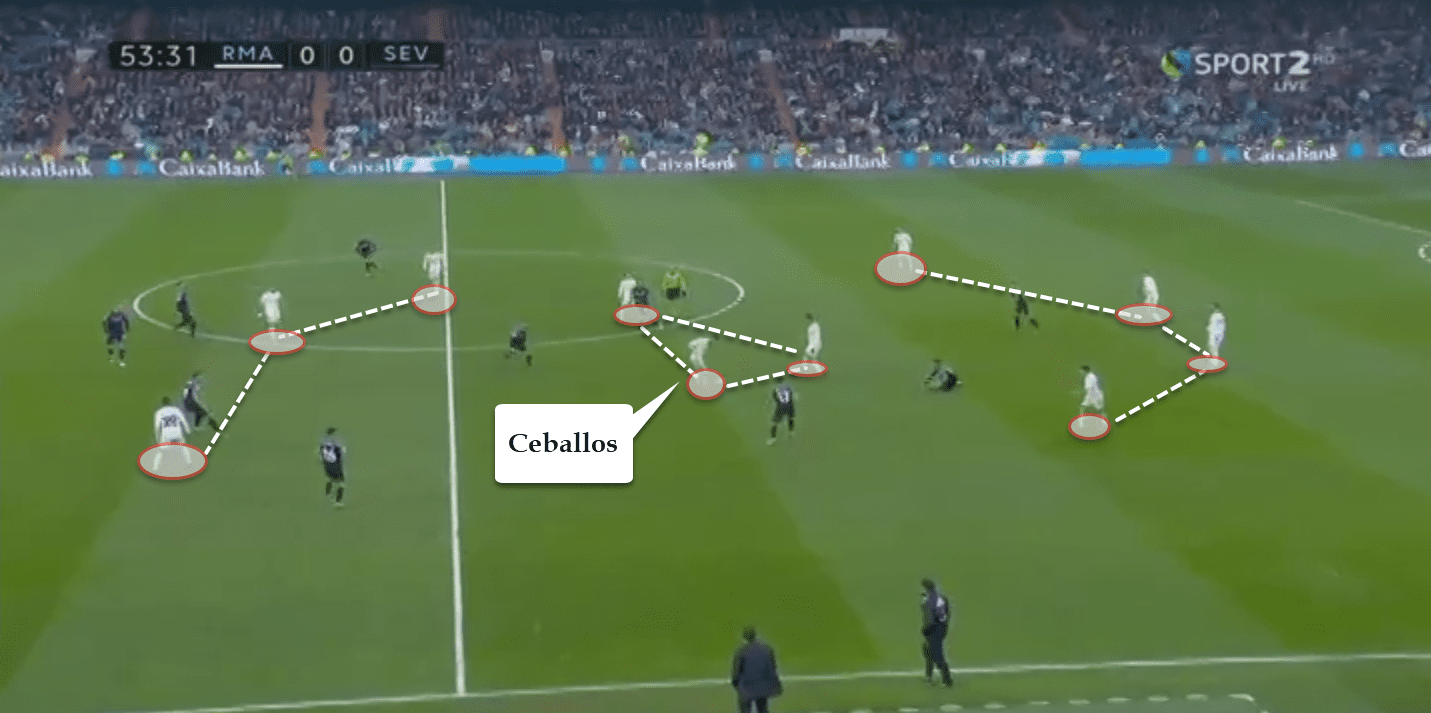
One of the most impressive aspects of Dani Ceballos is how balanced he is. From a bird’s eye view, there’s not one aspect of his game which stands out as weaker than the other. However, he’s not a mediocre player as might be the case with most such players. Indeed, he’s shown the potential to post world-class numbers in more than one department. We’ll further analyse below how he can help Arsenal and what his most striking attributes are.
Dani CeballosDribbling and ball-carrying
Let’s start with the good stuff. Ceballos was one of the best ball-carriers in Europe during his Real Betis days. He averaged more than six dribble attempts per 90 with a completion rate of 80%. Moving to Real Madrid led to him playing in a more advanced position. With that, his dribbles per 90 dropped by almost half (3.46). His touches in the box increased and this was also likely due to his said change in role. At any rate, he was still completing his dribbles at a very high percentage and at almost elite levels.
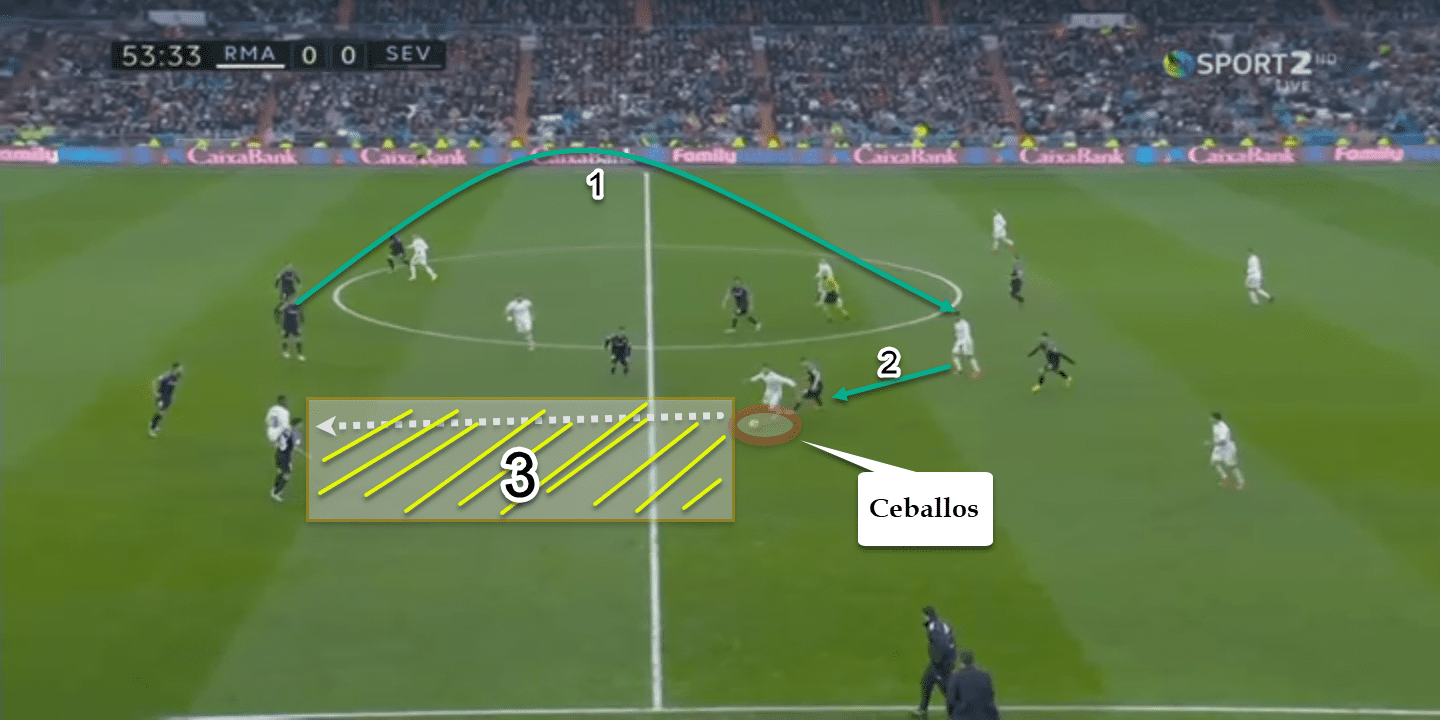
At Real Madrid, he mostly played as the left midfielder in the 4-3-3. From there, it was common to see him driving forwards with the ball and linking play with the full-back – Marcelo and the left-winger. This is seen in the above illustration as well.
Ceballos is not great at take-ons. He’s much better at dribbling to retain possession and his carrying abilities are more geared towards attacking space rather than beating his man. A lot of his dribbles are sideways across the width of the pitch so as to pull defenders out of position and create space for others. Having said that, he also possesses the technical ability to retain possession in very tight areas and guard the ball long enough to lay it off to a player making a run.
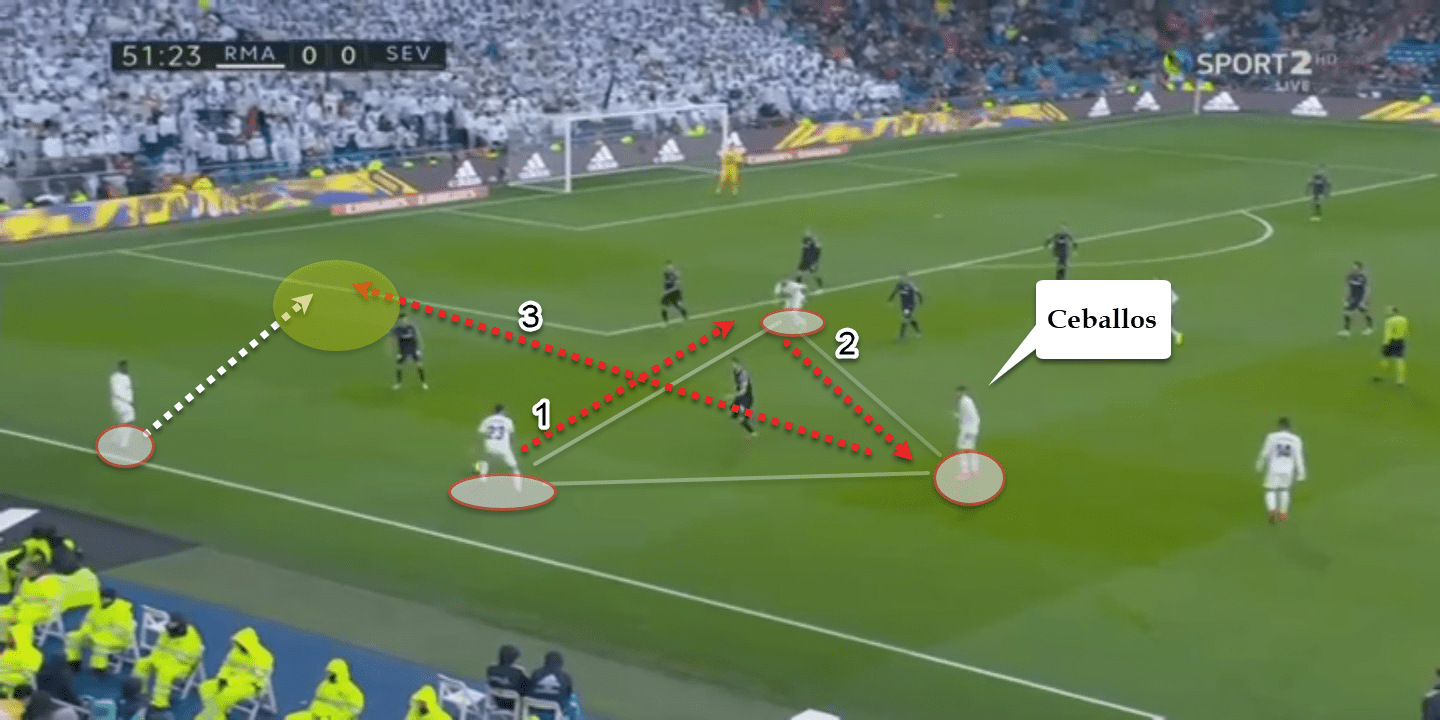
He favours deception instead of raw pace and physicality and uses an array of body feints to create space for himself. Although fairly competent on the flanks as well as the central zones, he prefers the latter since he has more space to exploit.
Another forte of his on-the-ball activities is his comfortability on the ball when he’s facing his own goal. His shielding of the ball is excellent when under pressure and he can usually escape using his nimble change of pace. He angles his body the right way to always keep the ball away from the defender and then adjusts accordingly so that the opponent has to foul him to get the ball off him. Another way he escapes pressure is to feint a pass one way using his body shape and then quickly take a touch with the outside of his right foot and exploit the space created.
It’s difficult to forecast what his numbers are going to look like at Arsenal seeing that there are a lot of positions he could slot into. However, he does bring an on-the-ball dynamism and elegance that has been lost in the centre of the park for Arsenal since Santi Cazorla last plied his trade at the Emirates.
Passing behaviour
Ceballos is an exceptional passer. He boasts a 91% passing accuracy which is incredible when considering the 1.2 through balls per 90 that he completes. He combines his dribbling ability with his passing to attack space and then slip through balls when the opposition players react to his movement and collapse on him.
He usually receives the ball in the left-halfspace. Since he’s a right-footed player, any pass he receives from the flank means that he immediately turns with the ball on his right foot and can face the full field. This also means that when he’s doing so and turning with the ball, the opponent also shuffles over to the other side anticipating a switch of play. However, this momentum of the defensive block is exactly what Ceballos tries to take advantage of and slips in a through ball or a reverse ball in the exact direction the pass came from. This is on display below.
Notice how in the following illustration he gets ready to pass to Modric but at the very last second reverses and slips in a well-weighted pass to the player who passed him the ball earlier. This is exactly what makes him such a danger in front of the opponent’s block.
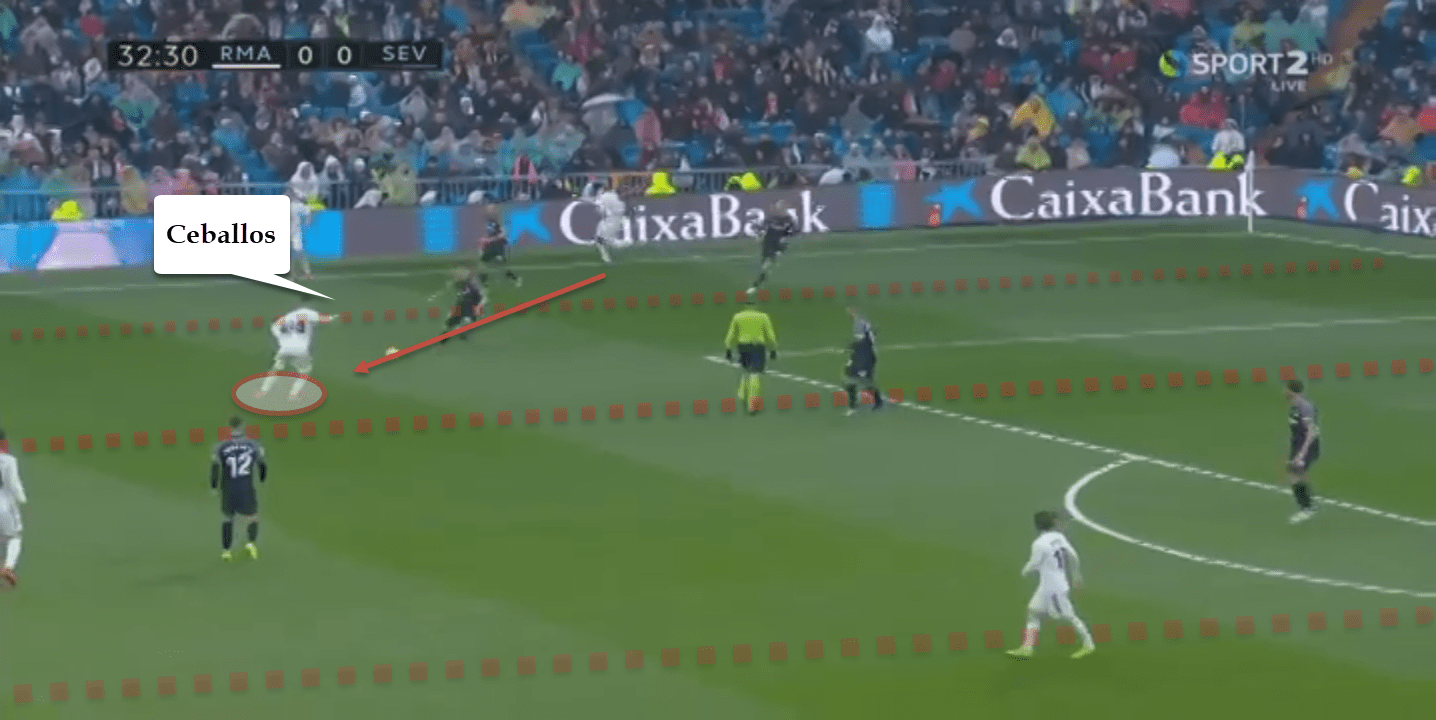
One of the issues of Ceballos is that since he’s on the left-flank if the opposition is smart in pressing him from the centre of the field, it moves him over to his weaker foot. He then has to switch over to his weak side and it also makes it easier for the opposition to herd him into an isolated situation. His only solution then is to take a long touch and use his speed to break the press but he doesn’t always succeed when trying that.
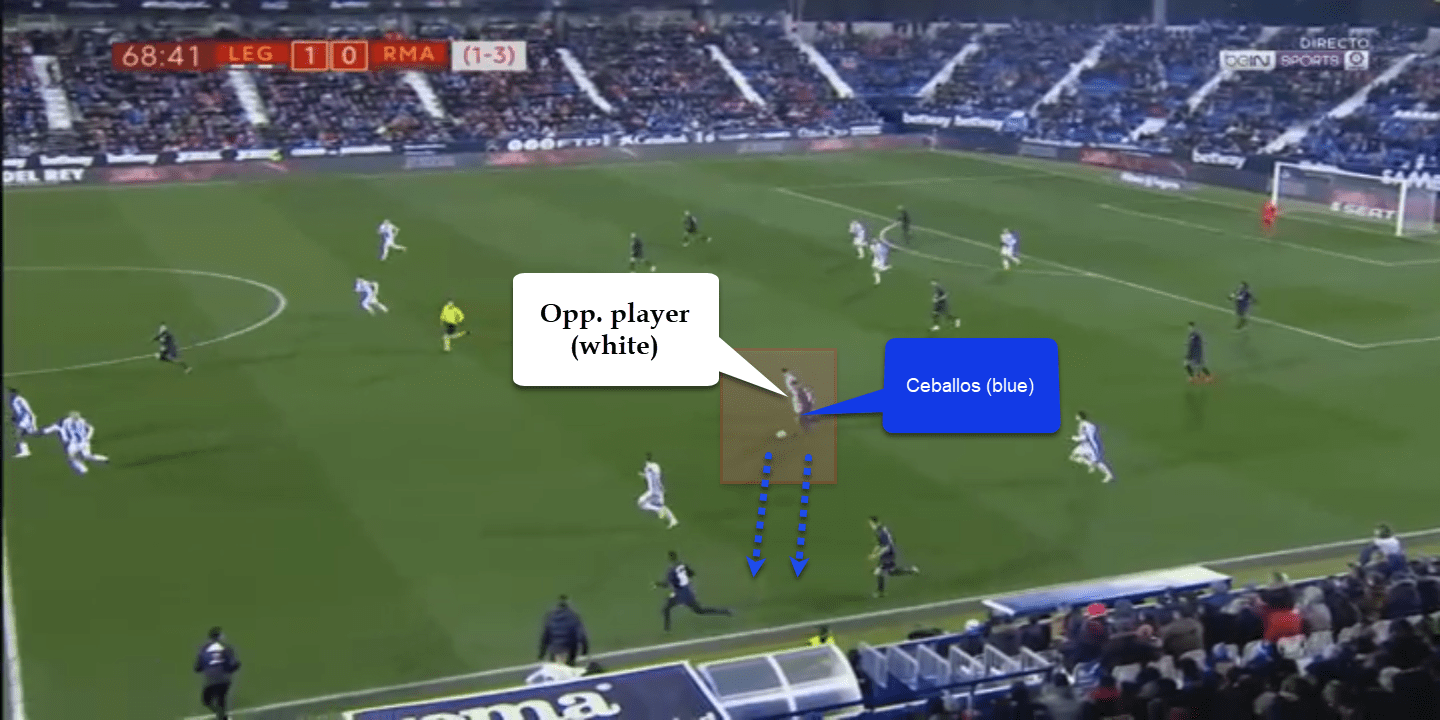
Defensive Activity
Off-the-ball, Ceballos is very physical. His days at Real Madrid honed his pressing ability. More of a tackler than an interceptor, he usually believes in winning the ball high up the pitch in order to kick-start their own offence.
For the Spanish U-21 team, he usually plays in the #10 role. As he’s playing in an attacking role, more often than not, he’s higher up the pitch when an attack breaks down and the opposition is countering. In that case, he’s very crucial to the team properly transitioning into defence. He is very committed when tracking back and he utilises the art of blind-side tackling instead of going to the ground in a slide-tackle (like a certain Antoine Griezmann or Danielle van de Donk, for instance).
This can be seen in the following image. Notice how Real Madrid’s defensive organisation is in disarray as can be noticed by Madrid’s crooked back-line and Marcelo’s horrible positioning. In such a phase, Ceballos’s backpressure is crucial in disrupting the opponent’s momentum.
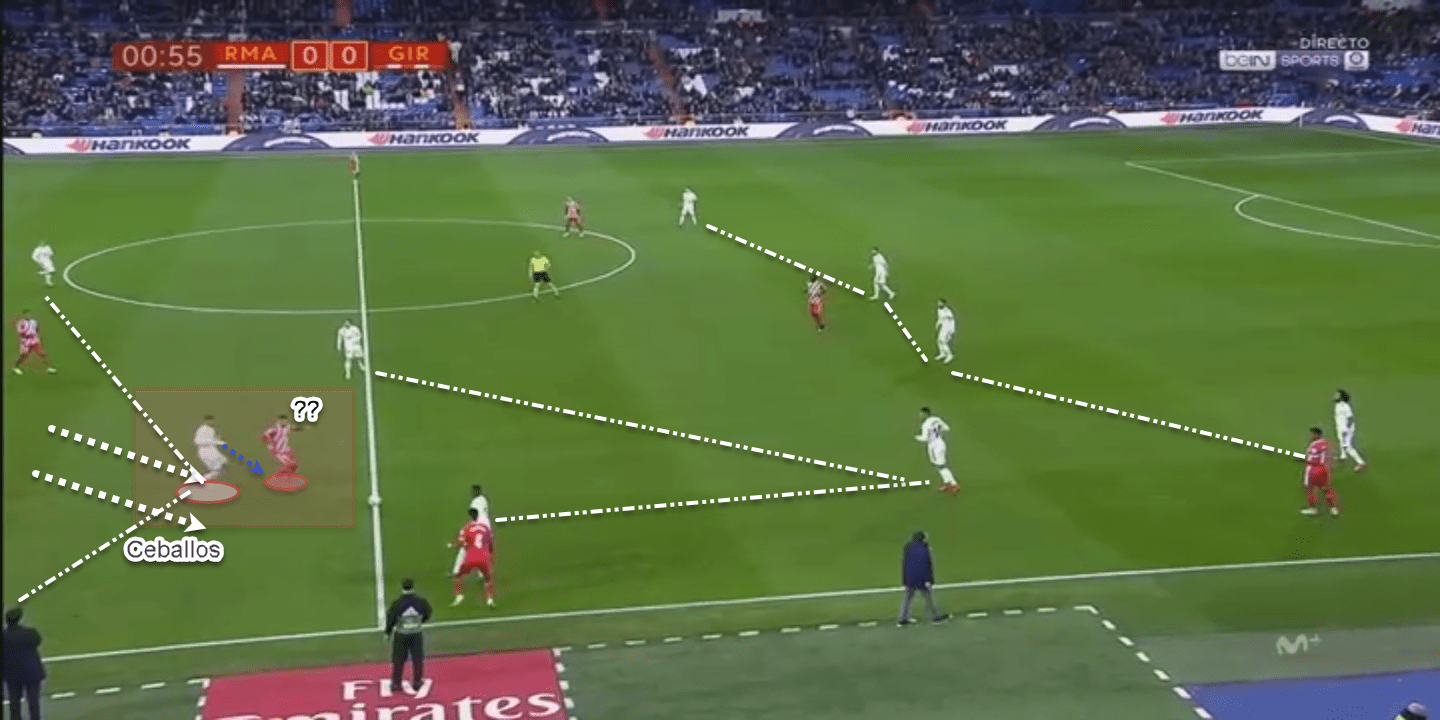
When playing in a medium block, his responsibility is to help his full-back when the opposition winger is overlapping and his own winger is too high up the pitch. He also has to protect the wide areas himself if Marcelo is unable to track back in time and Madrid have committed too many players higher up.
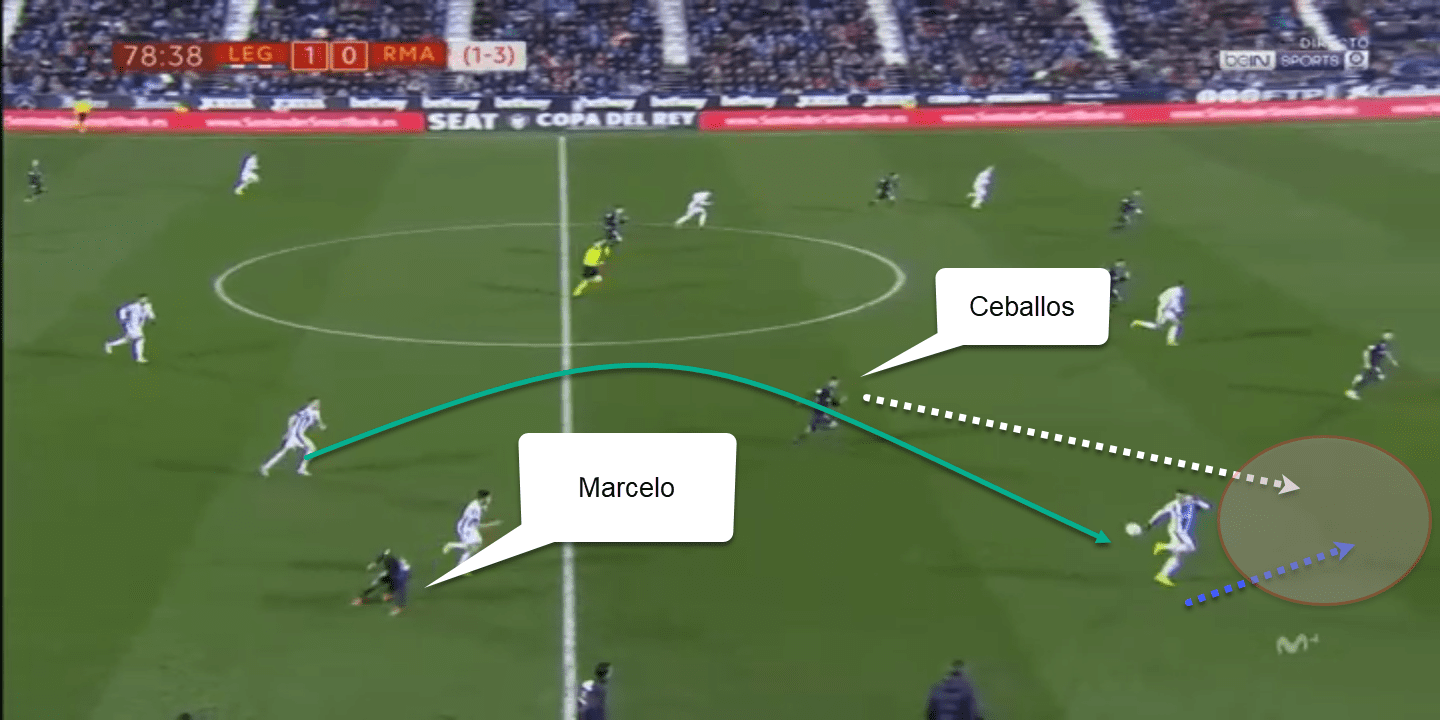
Playing in a possession-based team means that Ceballos knows the importance of fouling if necessary in order to stop the counter-attack. His usual positioning also helps during defensive transitions as he’s not usually making runs off-the-ball and instead, staying on the edge of the opponent’s box.
Arsenal – where does he fit in?
Emery’s favoured system is the 4-2-3-1. At Arsenal, we saw that at the beginning of the season. However, he moved on to a back three during the second half of the season to strike a balance between defensive issues and the need of the full-backs in the offensive phase. With some good signings this summer, the move back to the 4-2-3-1 is expected. Emery himself has stated that he’d love to go back to basics this season (even though Arsenal did line up in 3-4-3 in some pre-season friendlies). You can read more about Arsenal’s tactics in this analysis.
If that indeed happens, that is two positions suitable for Ceballos. One would be in the double pivot while the other would be in the #10 role.
In a double pivot, an equally important factor becomes the other pivot partner. Granit Xhaka is Arsenal’s hub – every action goes through him when he’s on the pitch. However, he plays on the left-hand side – the position which Ceballos himself prefers. Seeing them together would mean Xhaka would have to shift over to his weaker side. Matteo Guendouzi himself is another player who prefers the left of the pivot which allows him to open up his body and receive while facing the full field. In this case, the only ideal solution involves a double pivot of Ceballos and Torreira – someone comfortable as the right defensive midfielder.
Considering all of that, one way Arsenal might line up in 2019/20 is illustrated below-
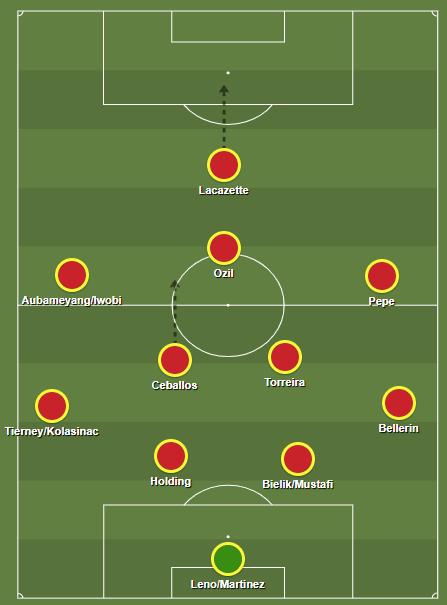
The same double-pivot dynamics hold true for all of the three-man variations as well. So we’ll skip discussing that.
This leaves us with two other options – a change in the system and playing Ceballos in the #10 role.
Change in system
From an isolated perspective, if we were given this bunch of players and asked to find a suitable formation which accommodates all the best attackers – I’d choose a 4-4-2 diamond. With Xhaka as the deepest midfielder, Torreira and Ceballos as the right and left midfielders respectively, and Mesut Özil as the #10. This midfield quadruple would overload the central zones as well as have the ability to turn into a deadly pressing system. The downside is the narrowness of the formation which would be very vulnerable to switches of play. Emery has tried the diamond in the derbies against Chelsea as well as Tottenham and both of them gave him unqualified success. However, that was also Emery’s most proactive formation change yet and something he’s not likely as comfortable with as his more go-to systems. Here’s how that might look like.
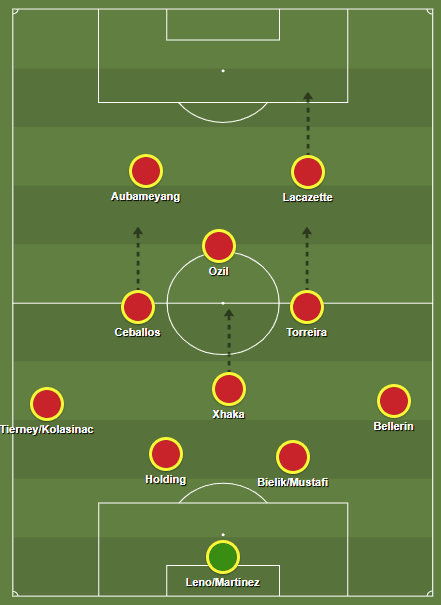
Advancing Ceballos
The other option seems more likely i.e. playing Ceballos in a playmaking role. In that case, we might see Özil start the matches and Ceballos then take over from him in case the German isn’t able to spin his magic. The other way around is also possible although less likely. Another option would be to have both Özil and Ceballos in the 4-2-3-1 with Özil drifting in from the flank creating an asymmetrical 4-2-2-2 formation with the full-backs providing width.
Ceballos is at his best when he’s given the freedom to operate in between the lines. He can also play in a deeper role but he’s much less effective in terms of creating chances. However, in a deeper role, his ball-carrying abilities are showcased more actively. Having such a versatile player in the ranks means that switching formations without making substitutions is also possible. Emery likes his substitutions as much as anyone else and it would be very interesting to see what tactical set-up he decides upon now that a lot more options are available.
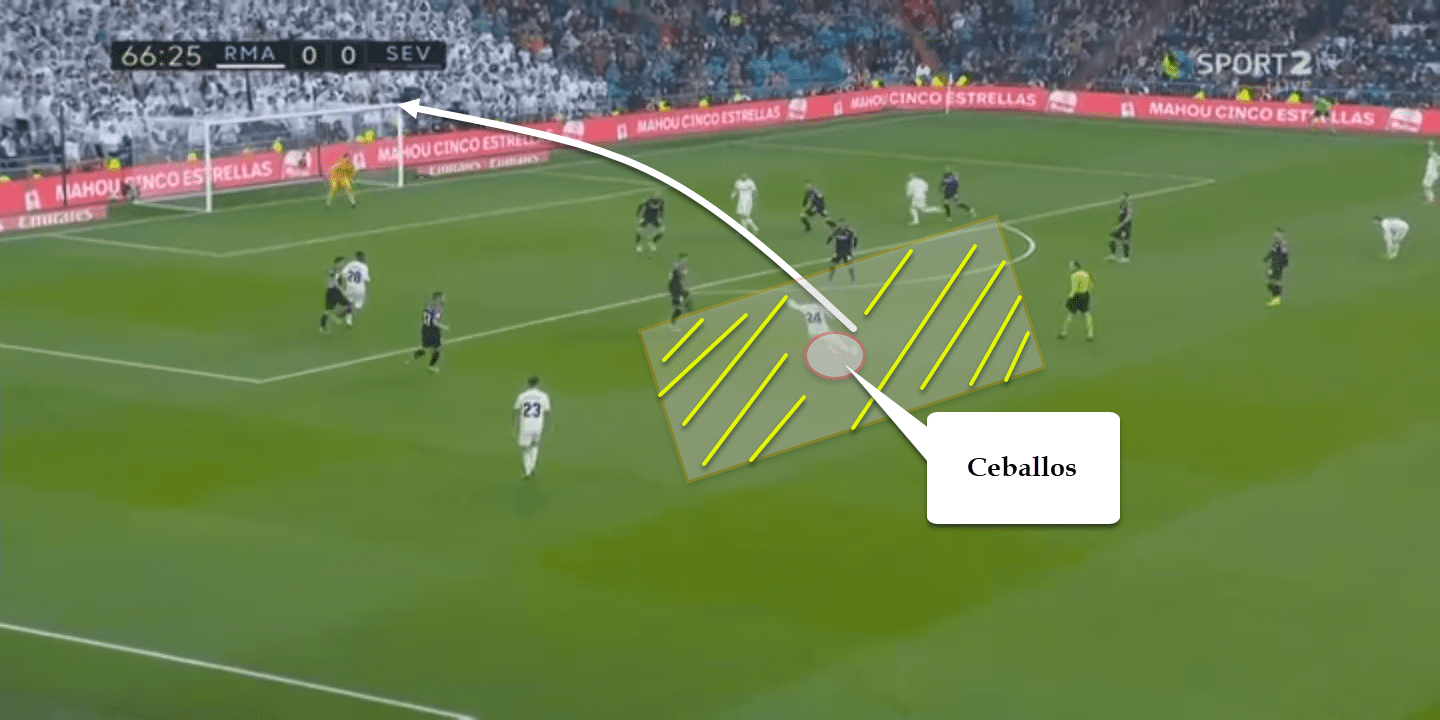
Notice in the above picture how Ceballos finds some space and immediately goes for goal. If he is played in a deeper role, the chances of him getting into these situations will decrease as will his goal threat.
Seeing the introduction of a completely alien formation like the 4-3-3 is also possible with the arrival of Nicolas Pépé. That would be a much more familiar system for Ceballos owing to his Real Madrid days.
Other
Apart from the ones discussed above, Dani Ceballos has a few more qualities which are relevant to Arsenal. He has a great shot from his dribble. Often at times for Real Madrid, we’ve seen him carrying the ball himself following a break of play and then shooting from distance. Which brings us to his next attribute – his long shot and the direct free-kick. When facing a team sitting very deep, he likes to move centrally and shoot from distance himself. This makes it risky for the opposition team to leave him unpressured. When they move out to press him, he smartly draws a foul on the edge of the box. This gives them a dangerous set-piece situation and this will be a ready welcome for Arsenal – a team which was last in the league for xG created from set-pieces.
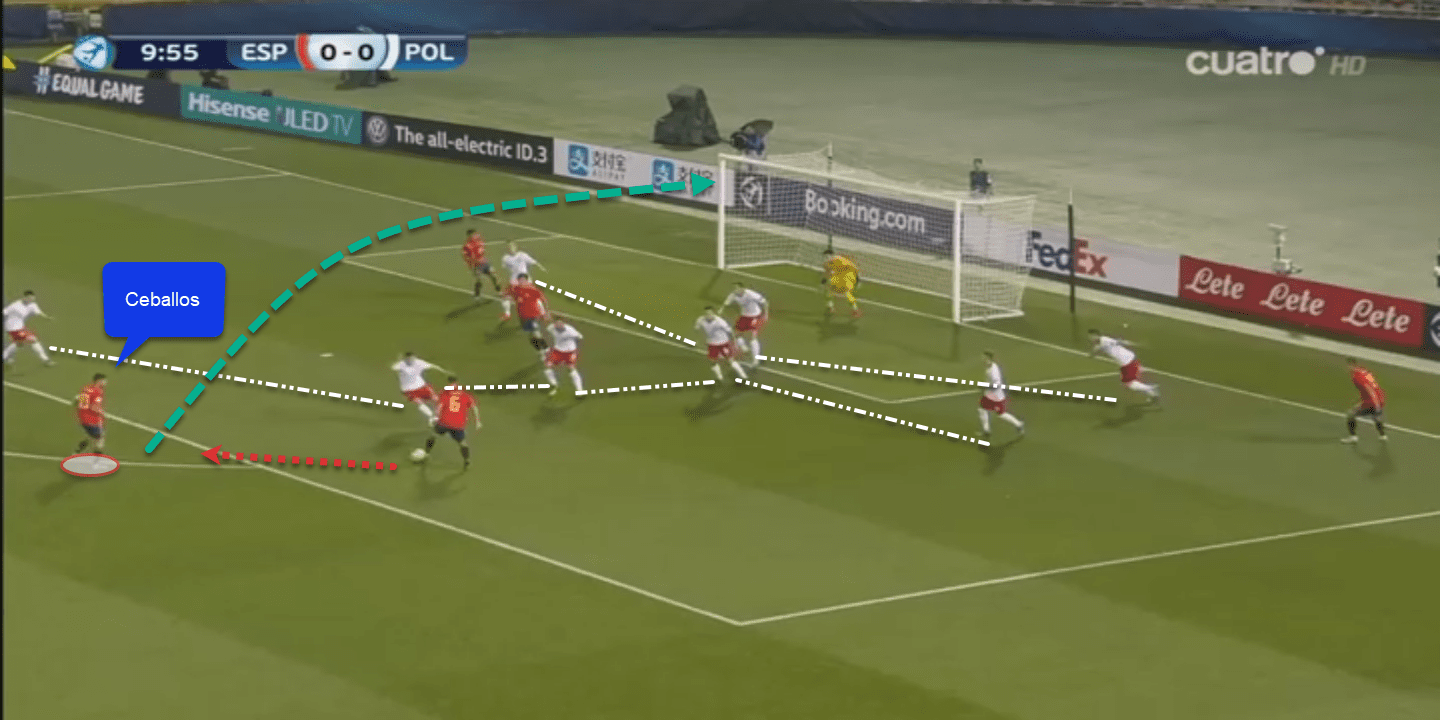
Conclusion
Every player has weaknesses and Ceballos is no exception as we looked at in this scout report. However, he is as good as modern midfielders come today and Arsenal have little to lose on this loan deal.
A non-footballing issue that might be worth remarking is that the player has shown some trouble with authority as evidenced by his immature remarks and clashes with Zidane. Unai Emery is the type of manager who knows how to exert his authority on his players and ensures that they know that the paramount interest is that of the team. This was clearly on display by how he benched Özil when he realised he was not the profile fit for his system. However, all evidence points towards both player and manager having a good rapport carried over from their time in Spain and if that continues and barring other injury issues, this might turn out to be a turning point for both Arsenal as well as Ceballos. Arsenal’s sole objective is to get Champions League football back at the Emirates. For Ceballos as well, impressing this season might see him become a bigger part of the Real Madrid team … who are going through a transition of their own.
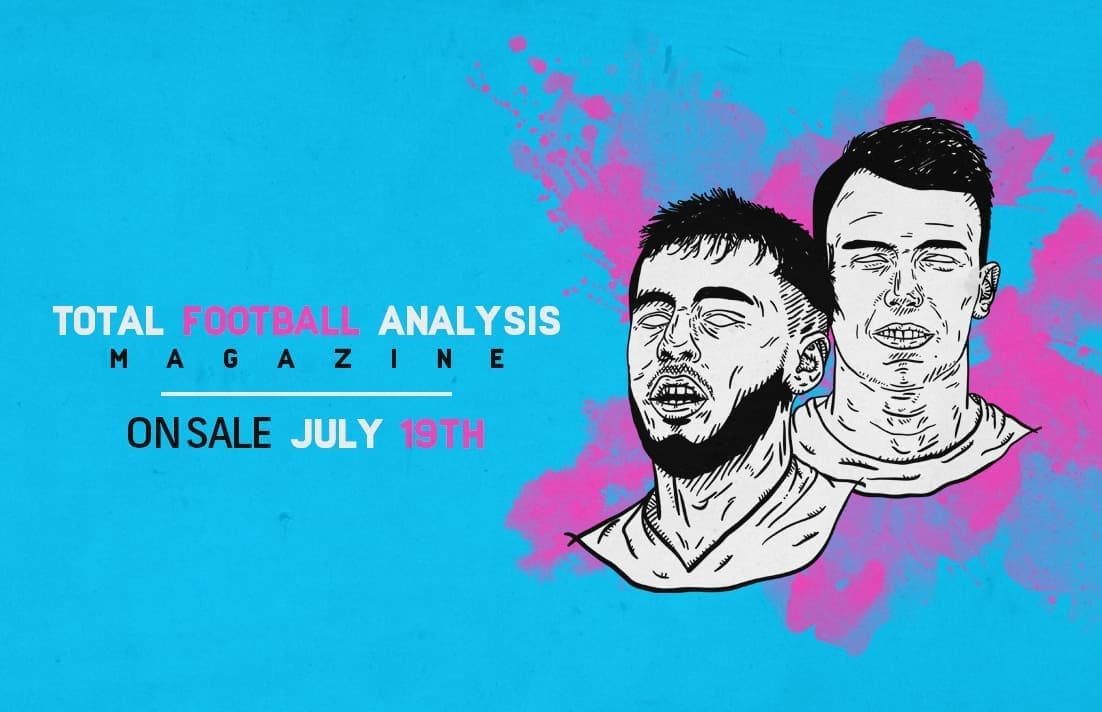
If you love tactical analysis, then you’ll love the digital magazines from totalfootballanalysis.com – a guaranteed 100+ pages of pure tactical analysis covering topics from the Premier League, Serie A, La Liga, Bundesliga and many, many more. Buy your copy of the July issue for just ₤4.99 here, or even better sign up for a ₤50 annual membership (12 monthly issues plus the annual review) right here.

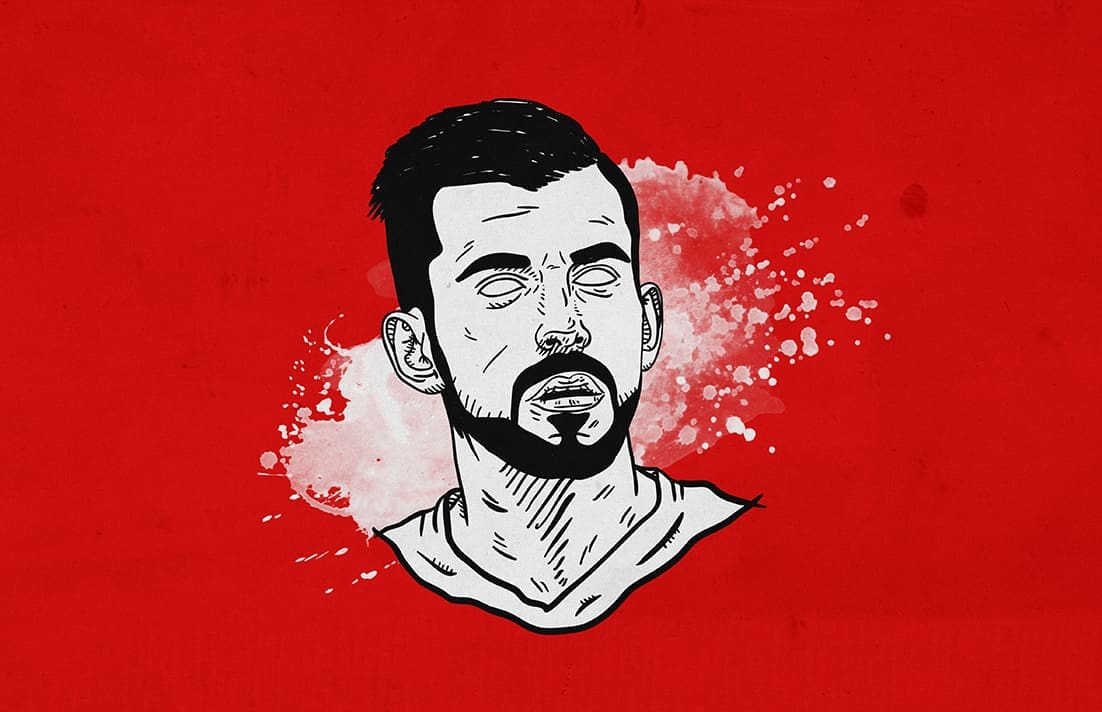




Comments